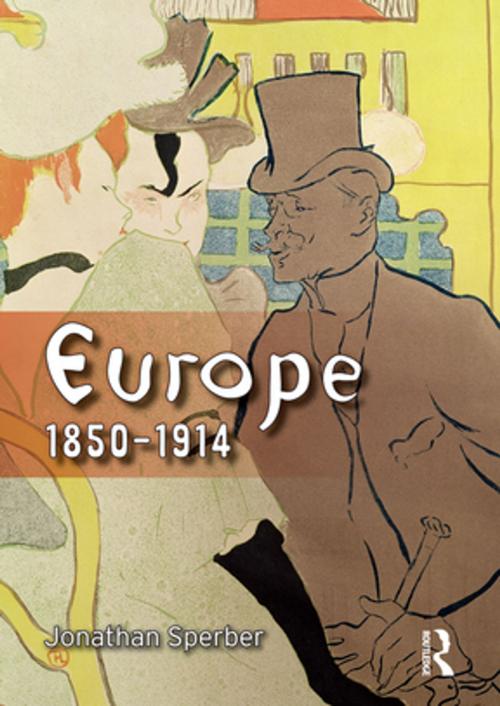Europe 1850-1914
Progress, Participation and Apprehension
Nonfiction, History, Modern, 19th Century, European General, 20th Century| Author: | Jonathan Sperber | ISBN: | 9781317866596 |
| Publisher: | Taylor and Francis | Publication: | January 14, 2014 |
| Imprint: | Routledge | Language: | English |
| Author: | Jonathan Sperber |
| ISBN: | 9781317866596 |
| Publisher: | Taylor and Francis |
| Publication: | January 14, 2014 |
| Imprint: | Routledge |
| Language: | English |
This innovative survey of European history from the middle of the nineteenth century to the outbreak of the First World War tells the story of an era of outward tranquillity that was also a period of economic growth, social transformation, political contention and scientific, and artistic innovation. During these years, the foundations of our present urban-industrial society were laid, the five Great Powers vied in peaceful and violent fashion for dominance in Europe and throughout the world, and the darker forces that were to dominate the twentieth century – violent nationalism, totalitarianism, racism, ethnic cleansing – began to make themselves felt.
Jonathan Sperber sets out developments in this period across the entire European continent, from the Atlantic to the Urals, from the Baltic to the Mediterranean. To help students of European history grasp the main dynamics of the period, he divides the book into three overlapping sections covering the periods from 1850-75, 1871-95 and 1890-1914. In each period he identifies developments and tendencies that were common in varying degrees to the whole of Europe, while also pointing the unique qualities of specific regions and individual countries. Throughout, his argument is supported by illustrative material: tables, charts, case studies and other explanatory features, and there is a detailed bibliography to help students to explore further in those areas that interest them.
This innovative survey of European history from the middle of the nineteenth century to the outbreak of the First World War tells the story of an era of outward tranquillity that was also a period of economic growth, social transformation, political contention and scientific, and artistic innovation. During these years, the foundations of our present urban-industrial society were laid, the five Great Powers vied in peaceful and violent fashion for dominance in Europe and throughout the world, and the darker forces that were to dominate the twentieth century – violent nationalism, totalitarianism, racism, ethnic cleansing – began to make themselves felt.
Jonathan Sperber sets out developments in this period across the entire European continent, from the Atlantic to the Urals, from the Baltic to the Mediterranean. To help students of European history grasp the main dynamics of the period, he divides the book into three overlapping sections covering the periods from 1850-75, 1871-95 and 1890-1914. In each period he identifies developments and tendencies that were common in varying degrees to the whole of Europe, while also pointing the unique qualities of specific regions and individual countries. Throughout, his argument is supported by illustrative material: tables, charts, case studies and other explanatory features, and there is a detailed bibliography to help students to explore further in those areas that interest them.















